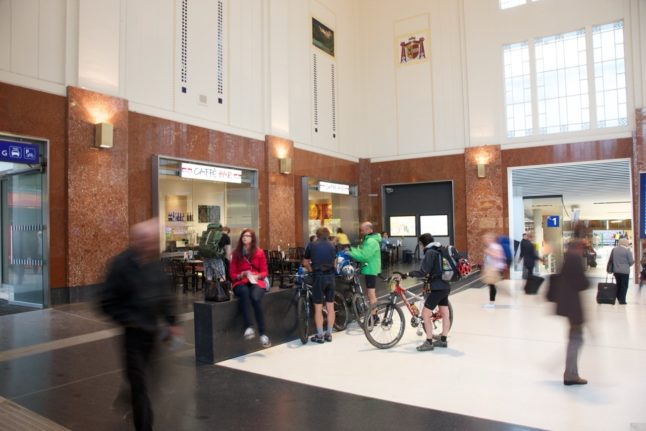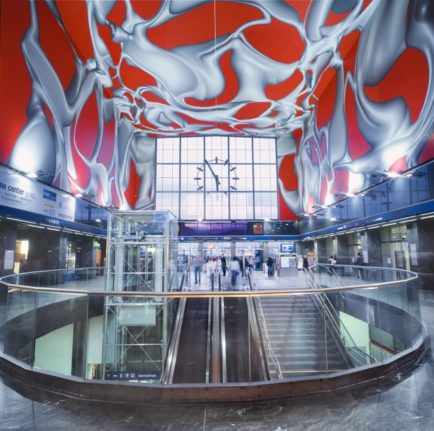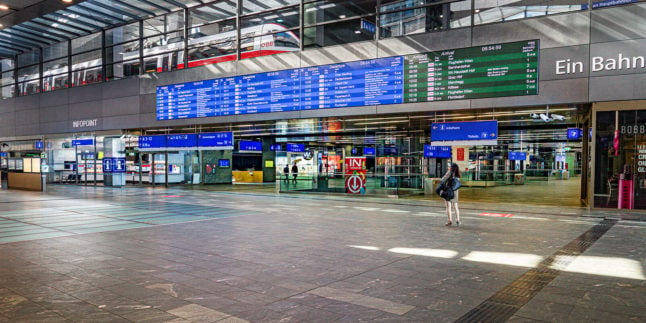Austria is well-known for its rail transport system, with over 6,000 kilometres of tracks unifying the country. The federal government also prides itself on offering connections abroad and incentives to rail travel – including the Klimaticket, a subscription that provides unlimited journeys throughout Austria for € 3 a day.
But train travel is more than just the tracks – the quality of the stations is just as important to determine how comfortable, safe and effective train travel can be in a country.
So, how good are Austria’s train stations?
READ ALSO: The spectacular Austrian train routes you can take with the Klimaticket
Vienna Hauptbahnhof
Austria’s largest train station, the Vienna Hauptbahnhof (Vienna Central Station), is also the country’s best – and the second best in Europe, according to a ranking of Europe’s largest railway stations made by Consumer Choice Center. According to the ranking, it stands just behind Switzerland’s central station in Zurich.
The survey looked into several factors, ranging from ticket office operating hours and waiting times to the number of in-station services, accessibility options, transport connections, free Wi-Fi, railway coverage, and ride-sharing”.
The station earned points for its modern look and its many connections. From there, you can catch the metro, fast trains, ÖBB long-distance trains, and many buses and trams. There are also car rental options and many cabs waiting for you at the entrance.
It also boasts a 4.4-star rating on Google Maps, with over 3,300 reviews.
One person said: “A modern railway station with connections to all around Austria and nearby countries. All the instructions are well given from the digital screens. It is very easy to find and navigate to the correct platform. Plenty of ticket machines are also available. Toilet facilities and some shops are also available. Trains were very punctual as per my experience. Staff personnel also very nice”.
READ ALSO: The new train routes connecting Austria to parts of Europe in 2024
Vienna Meidling
Another of Vienna’s train stations, the Vienna Meidling, also ranked high in the Consumer Choice Center ranking. Though it has fewer shops and stores when compared to the central station, it has some options and several snack and drinks vending machines. The station also offers connections through long-distance trains, fast trains, the metro and several bus and tram lines.
It’s a smaller station but “always well kept and clean”, said one reviewer on social media. The station is also very well located in Vienna, with many other shops and public transport offers easily accessible.

No other Austrian rail stations made it into Europe’s top 50 but the country does boast two other stations we think are worthy of a mention.
Salzburg Hauptbahnhof
The central station in Salzburg is also one of the largest in Austria and a major transport hub in western Austria, also serving as a border station to Germany. It has a more historical look and was designed in 1860 – though recent renovations took place in 2014. It has several food and shopping offers, including a supermarket which stays open on Sundays.
Salzburg Hauptbahnhof provides easy access to the city’s prominent attractions, like Hohensalzburg Fortress, Mirabell Palace, and Mozart’s Birthplace. Additionally, it serves as a convenient starting point for exploring the nearby countryside.
The station has a 4.3-star rating on Google Maps, with users praising it as a “beautiful combination of classic and modern architecture. Friendly and helpful staff”.
READ ALSO: Five European cities you can reach from Austria in less than five hours by train
Graz Hauptbahnhof
Graz Central Station, handling approximately 30,000 daily passengers, is a vital railway hub in Austria. This modern transport centre links regional and long-distance travel within Styria and extends connections beyond the province’s borders. Various transportation options are available for reaching this station, including trams, buses and fast trains.
This station has a shopping mall with many retail stores and restaurants. The supermarket – which is also open on weekends – is highlighted by travellers, who also praised it for being “clean and well-maintained”.

The decoration was also noted as one person said: “Very nice train station with an amazing paint job in the main hall. Ceilings or walls are colourful painted red and white. Plenty of little places to eat, and even a Spar supermarket or two.”
READ ALSO: The ten best destinations by direct night train from Austria
Europe’s best and worst stations
If you’re curious about the lowest-ranked entries in the Index, it might not be a shock that all five of the “worst” ones are located in Germany: three in Berlin, one in Munich, and another in Bremen.
The top five are Zurich Hbf, Vienna Hbf, Berlin Hbf, Bern, and Utrecht Centraal.
We’d like to hear from you: what are your favourite (or least favourite) Austrian train stations and why? Leave a comment below or send an email to [email protected].



 Please whitelist us to continue reading.
Please whitelist us to continue reading.
Member comments